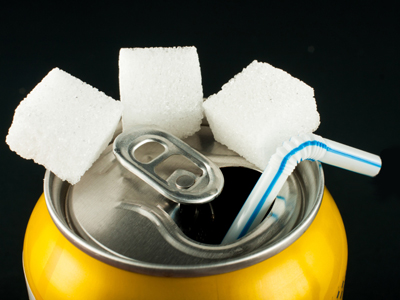
Ask the AI Tutor
Need help with Unit 2 - Enzymes? Ask our AI Tutor!
AI Tutor - Lucy
Connecting with Tutor...
Please wait while we establish connection

High fructose syrup is used to sweeten diet food and drink because it is much sweeter than other sugars, so less of it is required. This means fewer calories for the same sweetness.
Unit 2 - Enzymes
This GCSE Biology quiz tests your knowledge of enzymes, the biological catalysts that speed up reactions in digestion, respiration and other life processes inside cells.
1 .
The shape of an enzyme will change if which of the following is increased?
Temperature
Concentration
Time
Pressure
The temperature at which the enzyme works best is called the optimum temperature. For most human enzymes, this is body temperature, 37 degrees C. As the temperature increases above the optimum, the enzyme changes shape due to bonds breaking which hold the shape. The enzyme can no longer work so enzyme activity is reduced
2 .
Isomerase enzyme is used in industry for making high fructose syrup from which of the following?
Sucrose
Glucose
Maltose
Starch
High fructose syrup is used to sweeten diet foods because it is much sweeter than other sugars, so less of it is required. This means fewer calories for the same sweetness
3 .
Which enzyme converts starch into sugars in the mouth and small intestine?
Protease
Lipase
Isomerase
Amylase
Enzyme names usually end with 'ase'
4 .
Which enzyme converts fats into 3 fatty acids and glycerol?
Amylase
Protease
Lipase
DNA polymerase
When you see a bioligical word that starts with 'lip' or 'lipo' it will usually indicate something to do with fats
5 .
Which of the following emulsifies fats so they can be further digested by the enzyme lipase?
Hydrochloric acid
Mucus
Bile
Saliva
Bile is made in the liver and stored in the gallbladder. It is released into the digestive system through the bile duct
6 .
Which word describes the change of shape when an enzyme is heated to high temperatures?
Denatured
Destroyed
Killed
Damaged
Some students believe that enzymes are 'killed' by heat and extremes of pH. They are not - enzymes can't be killed as they were never alive! Denatured is the correct word to use in exams
7 .
Protease enzymes break down proteins into what?
Fatty acids
Amino acids
Carboxylic acids
Hydrochloric acid
These can then be re-assembled by other enzymes into new, different protein molecules exactly where they are needed
8 .
Enzymes are which type of molecule?
Fat
Starch
Protein
Amino acid
They are very complex molecules
9 .
Protease enzymes are located in which organ?
Mouth
Oesophagus
Stomach
Colon
Protease enzymes are also located in the small intestine. The stomach protease works best at pH 2 and the one in the small intestine works best at pH 8
10 .
Which enzyme is used in industry to convert starch to glucose?
Protease
Lipase
Carbohydrase
Isomerase
Other examples include the use of the enzyme rennin to make cheeses and esterases that break down certain chemical bonds in glues and adhesives during the recycling of paper
**Unlimited Quizzes Await You! 🚀**
Hey there, quiz champ! 🌟 You've already tackled today's free questions.
Ready for more?
Ready for more?
🔓 Unlock UNLIMITED Quizzes and challenge yourself every day. But that's
not all...
not all...
🔥 As a Subscriber you can join our thrilling "Daily Streak" against other
quizzers. Try to win a coveted spot on our Hall of Fame Page.
quizzers. Try to win a coveted spot on our Hall of Fame Page.
Don't miss out! Join us now and keep the fun rolling. 🎉
**Unlimited Quizzes Await You! 🚀**
Hey there, quiz champ! 🌟 You've already tackled today's free questions. Ready for more?
🔓 Unlock UNLIMITED Quizzes and challenge yourself every day. But that's not all...
🔥 As a Subscriber you can join our thrilling "Daily Streak" against other quizzers. Try to win a coveted spot on our Hall of Fame Page.
Don't miss out! Join us now and keep the fun rolling. 🎉






